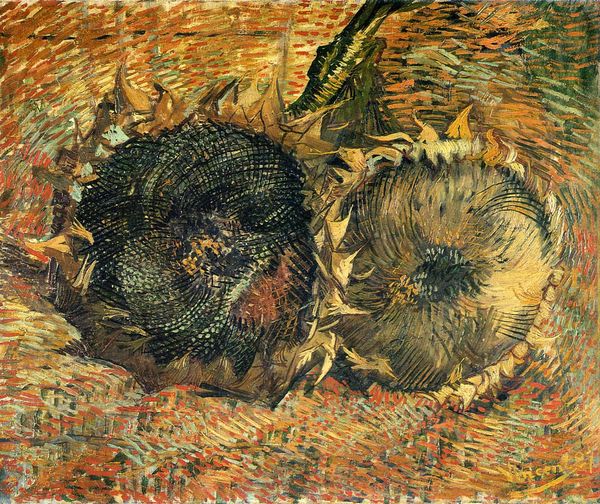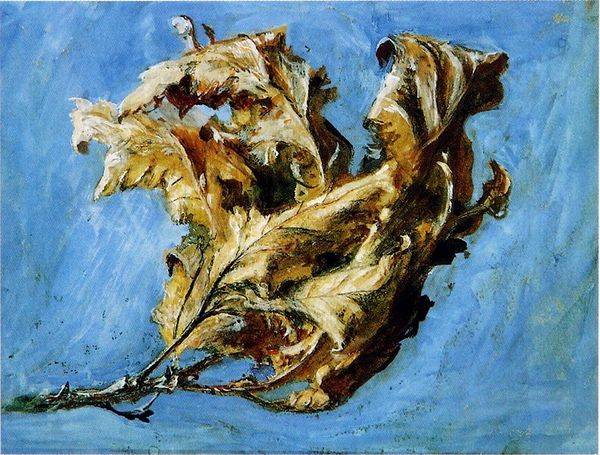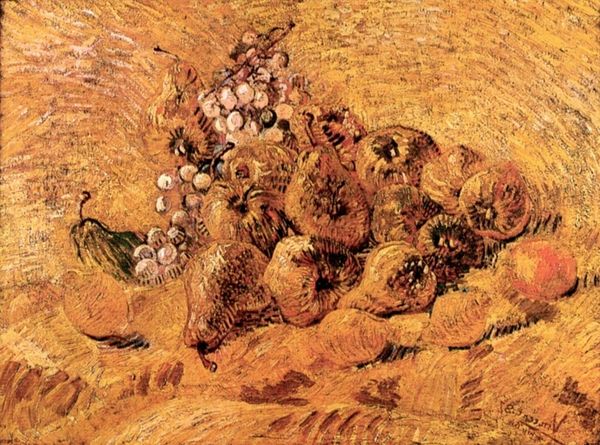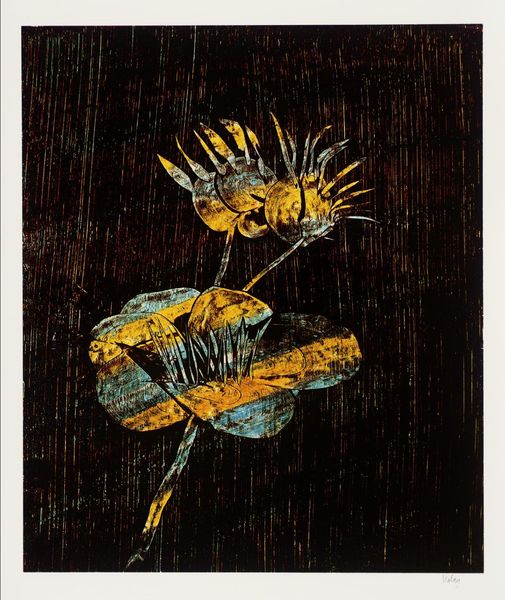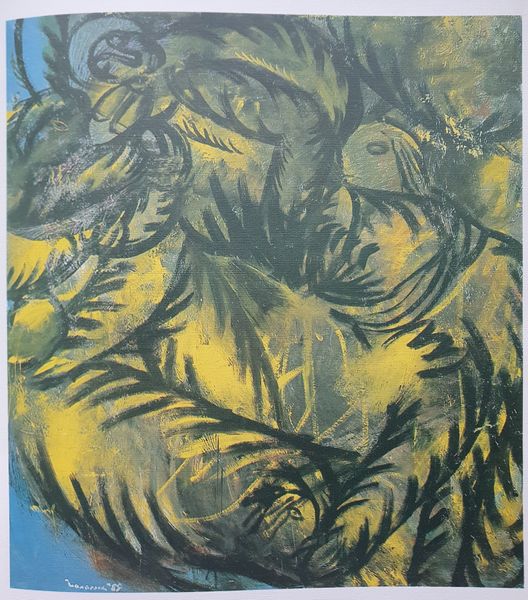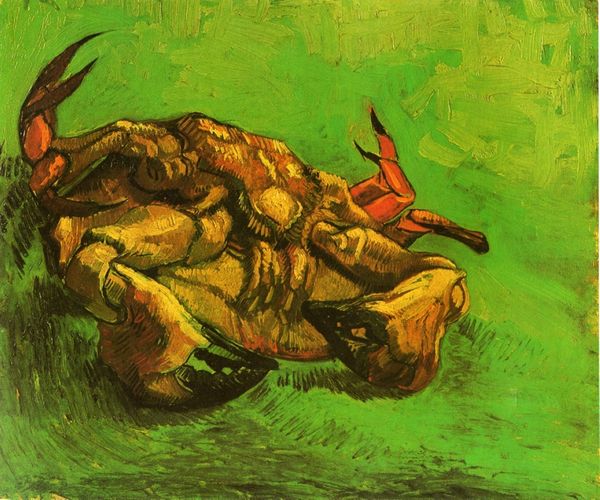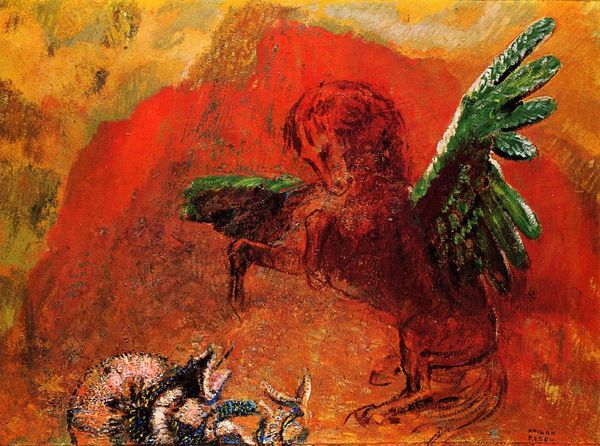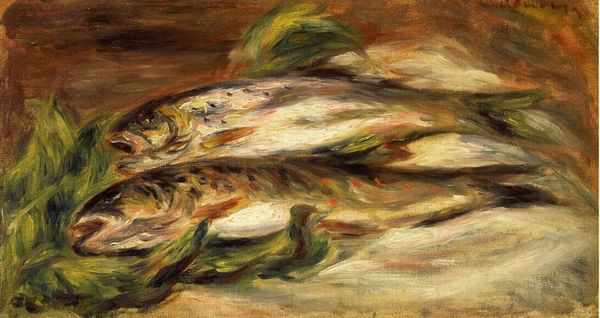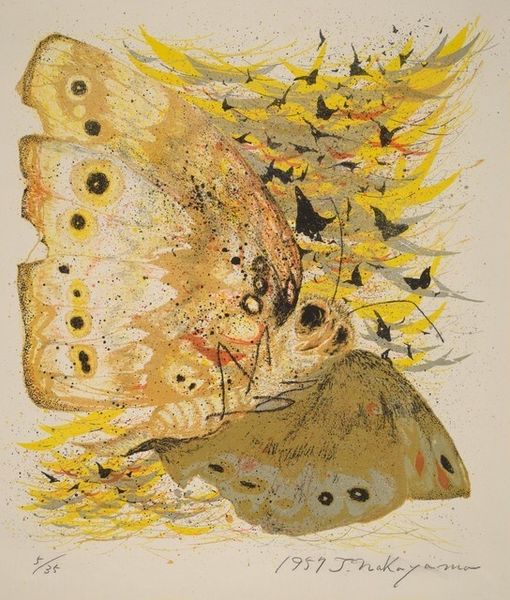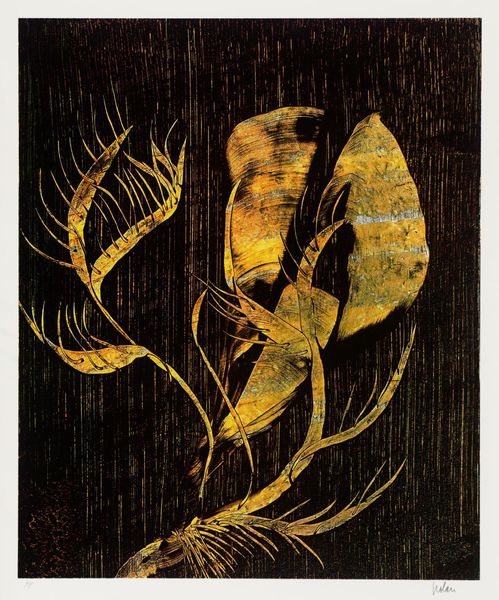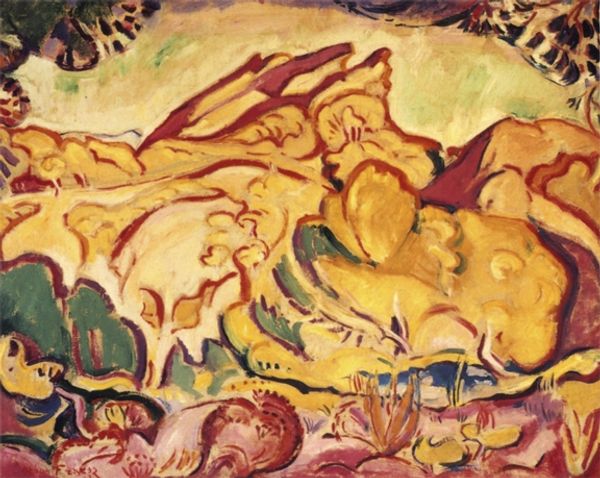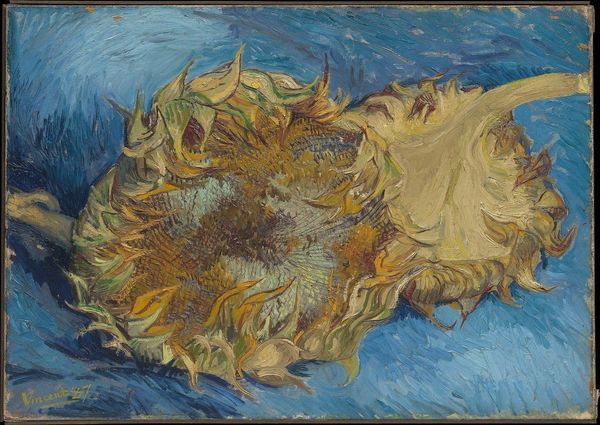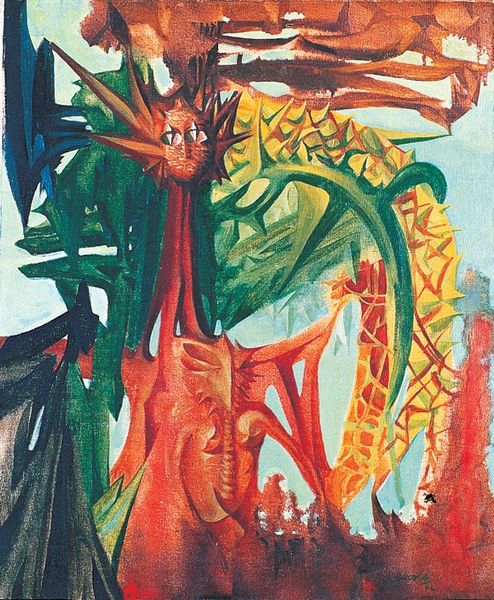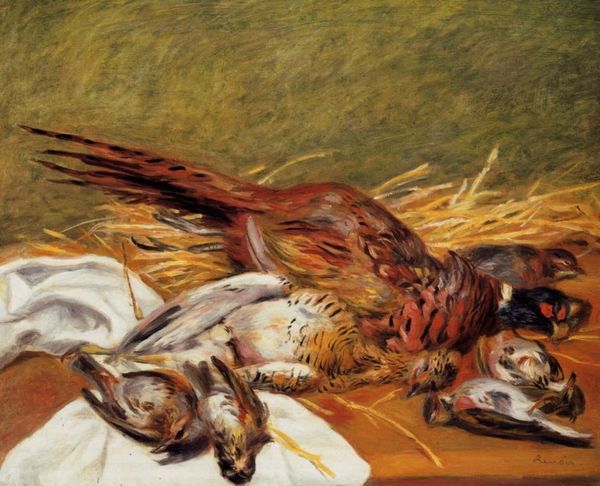
Dimensions: 60 x 100 cm
Copyright: Public domain
Editor: So, here we have Van Gogh's "Still Life with Four Sunflowers," painted in 1887. It's an oil painting, and what strikes me immediately is the somber mood, even with those vibrant yellows and oranges. The sunflowers are drooping, past their prime. What do you see in this piece? Curator: I see a poignant commentary on the life cycle, referencing gendered historical expectations and the male gaze in visual culture. The wilting flowers might be interpreted as symbols of feminine vulnerability. Do you see how the brushstrokes embody his expressive urgency? They almost seem to scream against societal pressures. Editor: I hadn’t thought of it that way. I was just thinking about the transience of beauty, but the idea of societal pressure on women and vulnerability, and his brushstrokes speaking against that, adds a whole new layer. How do you think his own struggles tie into that? Curator: Precisely! His battles with mental health, social isolation, can be viewed as a form of protest against societal norms. It intersects with his identity as an outsider, using art to challenge the status quo and offering silent critiques of a hyper-masculine 19th century. Don’t you feel it? Editor: Yes, I definitely do. Now when I look at it, it seems much more charged with emotion and commentary than before. I see his frustration, but also his empathy, much clearer now. Curator: Exactly, understanding the sociopolitical and historical backdrop reveals that even a seemingly simple still life speaks volumes about complex themes like identity, gender, and resilience. Editor: I learned to examine artwork through different, more socially conscious, lenses. Thank you! Curator: It was my pleasure.
Comments
No comments
Be the first to comment and join the conversation on the ultimate creative platform.
